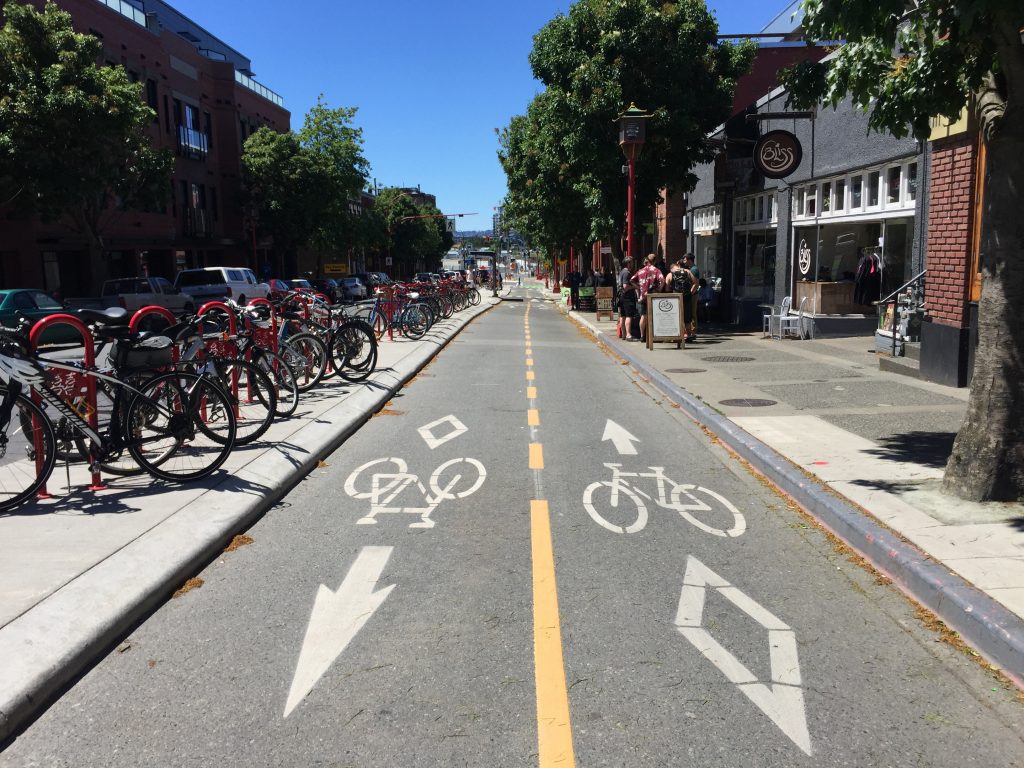In June 2018, at the FCM annual conference in Halifax, FCM council approved this important motion. The decision was nearly unanimous and it is not hard to see why.
Cities and towns across Canada asked the federal government to:
· Improve transportation statistics collected by the federal government to assist municipalities more accurately measure mode share and report on progress on local AT strategies;
· Develop and publish AT policy and infrastructure design guidelines for adoption at the provincial/territorial and municipal level;
· Coordinate the roles and responsibilities of relevant federal departments and agencies; and
· Ensure continued long-term federal investment in AT infrastructure.
The full text can be found below.
What can you do? Send a link to the motion to your MP and ask them what the Government of Canada is doing about it.

Motion Adopted by Federation of Canadian Municipalities. June 2018
WHEREAS, Active Transportation is any form of human-powered transport, especially walking and cycling;
WHEREAS, According to the Public Health Agency of Canada, physical activity has been shown to reduce the risk of over 25 chronic conditions, including coronary heart disease, stroke, hypertension, breast cancer, colon cancer, Type 2 diabetes and osteoporosis;
WHEREAS, About one quarter of Canada’s GHG emissions come from the transportation sector, Canada has the second highest rate of vehicle-kilometres travelled per person amongst OECD (Organization for Economic Cooperation and Development) member countries, Canada has committed to reduce GHG emissions by 30% below 2005 levels by 2030, and, according to Canada’s December 2017 submission to the United Nations, additional efforts will be required to reach that target;
WHEREAS, Municipalities recognize the social, health, environmental and economic benefits that result when more people walk and cycle;
WHEREAS, Municipalities are integrating pedestrian and cycling infrastructure into long-term transportation and land-use planning, for instance through Complete Streets policies;
WHEREAS, Municipalities, municipal transit authorities and the Canadian Urban Transit Association (CUTA) recognize the important linkages between public transit and pedestrian and cycling infrastructure as part of integrated transportation networks;
WHEREAS, Municipalities recognize that making it easier and safer for people to walk and bike achieves important social inclusion benefits, especially for low-income Canadians, children, parents, seniors and persons with disabilities;
WHEREAS, Responding to calls from FCM, the federal government’s Investing in Canada Plan supports municipal investments in Active Transportation (AT) infrastructure, and greater federal leadership on AT policy will help maximize the benefits of joint federal-municipal investments in the near-term;
WHEREAS, Recognizing that municipal governments are best placed to develop local and regional AT strategies, the federal government has jurisdiction over complementary and enabling policy areas including transportation policy, transportation statistics, health policy and the environment, which can support and scale-up existing municipal efforts; now therefore be it
RESOLVED, That the Federation of Canadian Municipalities (FCM) call on the Government of Canada to develop and implement a National Active Transportation (AT) Policy that would, at minimum:
· Improve transportation statistics collected by the federal government to assist municipalities more accurately measure mode share and report on progress on local AT strategies;
· Develop and publish AT policy and infrastructure design guidelines for adoption at the provincial/territorial and municipal level;
· Coordinate the roles and responsibilities of relevant federal departments and agencies; and
· Ensure continued long-term federal investment in AT infrastructure.


